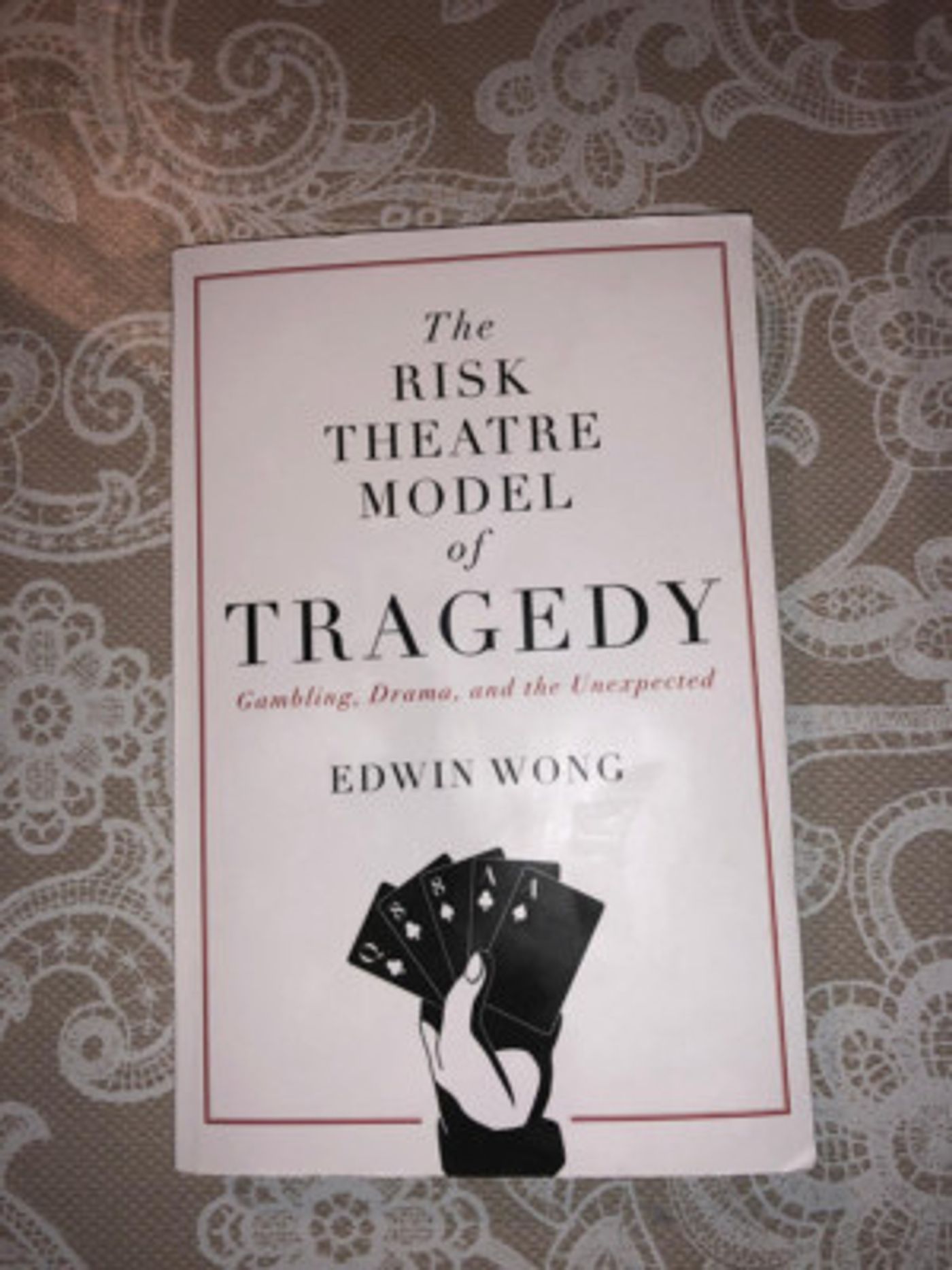Book Review: THE RISK THEATRE MODEL OF TRAGEDY, Edwin Wong
 In the preface to his new book, classicist Edwin Wong asserts: "Today, tragedy is a tired art... this book aims to restore this revered art to its rightful throne by inviting, in nine chapters, dramatists to write risk theatre". It's a brave claim, and the foundation for an insightful and compelling read.
In the preface to his new book, classicist Edwin Wong asserts: "Today, tragedy is a tired art... this book aims to restore this revered art to its rightful throne by inviting, in nine chapters, dramatists to write risk theatre". It's a brave claim, and the foundation for an insightful and compelling read.
For Wong, "risk theatre" encompasses the idea that risk is central to the idea of tragedy. Characters, predominately heroes, gamble with high-risk stakes to achieve their goals, and "the tragic occurs when risk runs awry"; risk theatre entertains because it dramatises these dynamics. More importantly, not only does it entertain, risk theatre educates.
Wong's passion for his subject matter abounds: he's incredibly knowledgeable and widely read. Combining examples from Greek tragedies such as Oedipus Rex, through to the likes of Shakespeare and O'Neill, Wong is able to explore his theory with such depth and conviction that the reader is swept along. I particularly enjoyed his study of the shadow market, where "concerns such as honour, desire, heartache, grief, and joy change hands. When they change hands, their relative value is revealed."
These concerns are central themes within many tragedies: for example, Macbeth chases ambition at the expense of the milk of human kindness, and Hamlet's grief motivates his quest for revenge. I love tragedy as an art form because it explores human nature: we all have the capacity for such concerns.
Wong is able to ensure his insights remain accessible because he regularly examines the familiar anew, and for those elements or texts that may not be so, his writing overall is pithy enough to keep us engaged.
The structure of the book also helps with this: it's split into four separate parts, and flows neatly and naturally. Part One explores the structure of Tragedy, opening with a section called: "Temptation, Wager and Cast", wherein Wong cleverly introduces his gambling analogy that ties his entire theory of risk theatre together. He argues that tragic heroes are tempted, then make their wager, and tragedy ends when the die is cast, and the action reaches the point of no return.
From there, he moves on to the different philosophies within tragedy, the "poetics" of tragedy (how to write it and features it needs), and finally tragedy in relation to other genres and risk theatre's place in modern society. There was the rare occasion where I found myself a little lost due to the sheer number of examples used to illustrate ideas, but it was short-lived, as it's easy to get back on track thanks to Wong's short chapters. He also reinforces the key points he makes at the end of each section, showing how each idea connects to the next.
Through the art of reinterpretation, Wong manages to present a bold, inventive new model of theatre through the lens of risk, reflected in society as it is today. He ends on the thought: "Tragedy, by forever dramatizing risk, adds to our understanding of risk. And I think that tragedy, because it adds to our understanding of such a captivating and elusive concept, has a claim of being the greatest show on earth."
Such passion is hard to argue with, and its effects are still being celebrated today: Wong founded the Risk Theatre Modern Tragedy Playwright Competition, the largest for the writing of tragedy, along with the Langham Court Theatre - and this year's contest saw entries from 182 playwrights representing 11 countries!
The Risk Theatre Model of Tragedy: Gambling, Drama, and the Unexpected is published by Friesen Press
Reader Reviews
Videos

